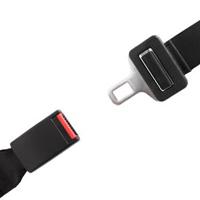Seat belt
Not wearing a seatbelt will make a bad accident even worse –any injuries sustained will be much more severe. But this is so easy to fix! All new cars – and the majority of older cars – have seatbelts for every seat.
Moreover, wearing a seatbelt is compulsory in all EU countries. Think you won’t get caught? Some countries now have road-side cameras able to detect drivers and passengers not wearing a seatbelt.
Wearing a seatbelt is also obligatory in all types of vehicle – that includes coaches and lorries.
Why do seatbelts work?
Seatbelts and child restraints are secondary safety devices, meaning they are primarily designed to prevent or minimise injury when a crash occurs. They:
- reduce the risk of being thrown against the interior of the vehicle or reduce the severity of injuries if this occurs
- make sure the strongest part of the body absorb the forces of a crash
- prevent the occupant from being thrown out of the vehicle
- prevent injury to other occupants (an unbelted back seat passengers can be catapulted forward and hit other passengers).
Keeping passengers safe
After securing your own seatbelt, make sure any passengers are also belted up. This includes children, for whom special rules apply across the EU:
- children under 1.35m tall must use a device that has been approved for their size
- taller children may use an adult seatbelt
- rear-facing child restraints are not allowed in the front seat unless the airbag has been deactivated.

